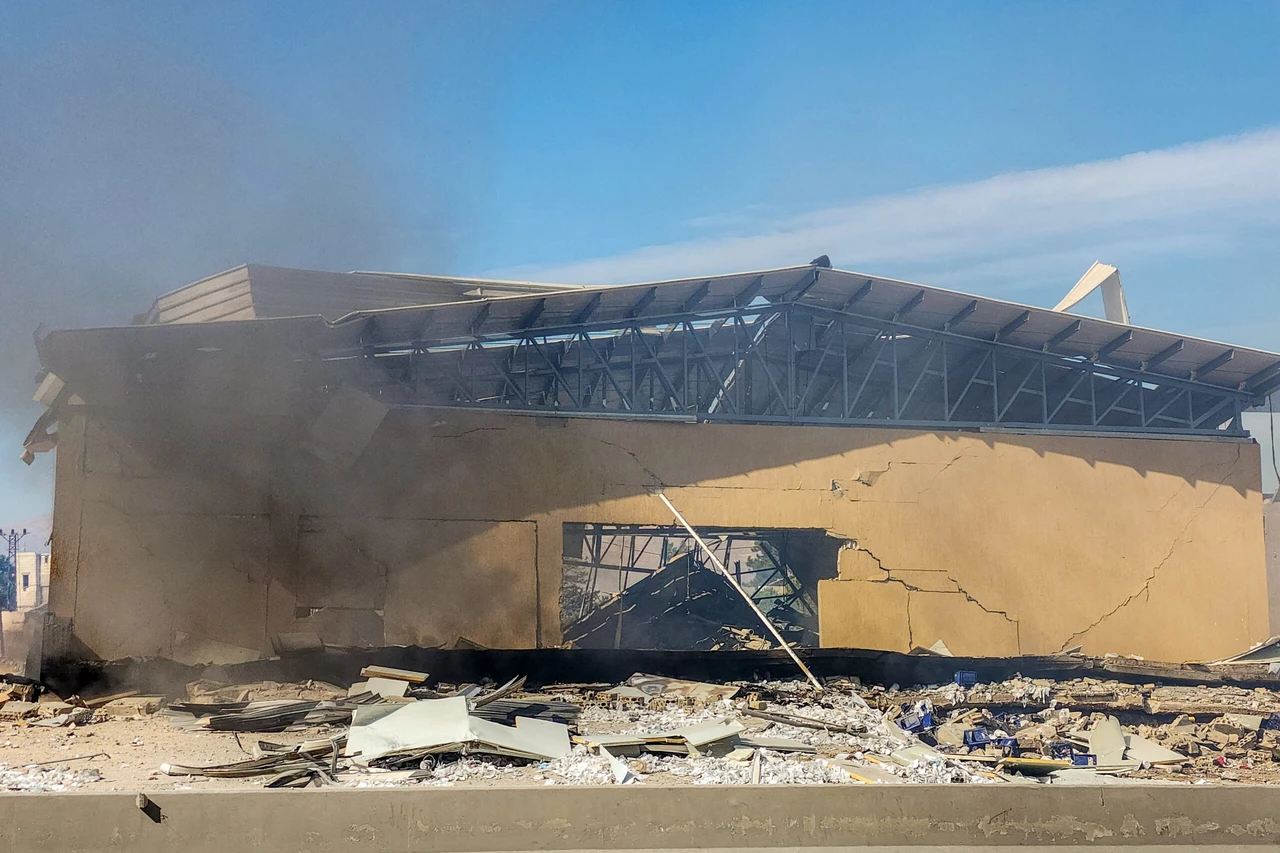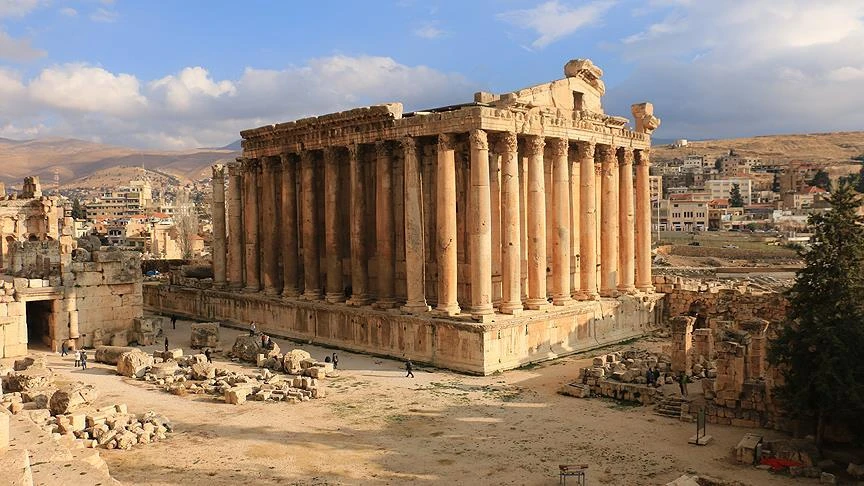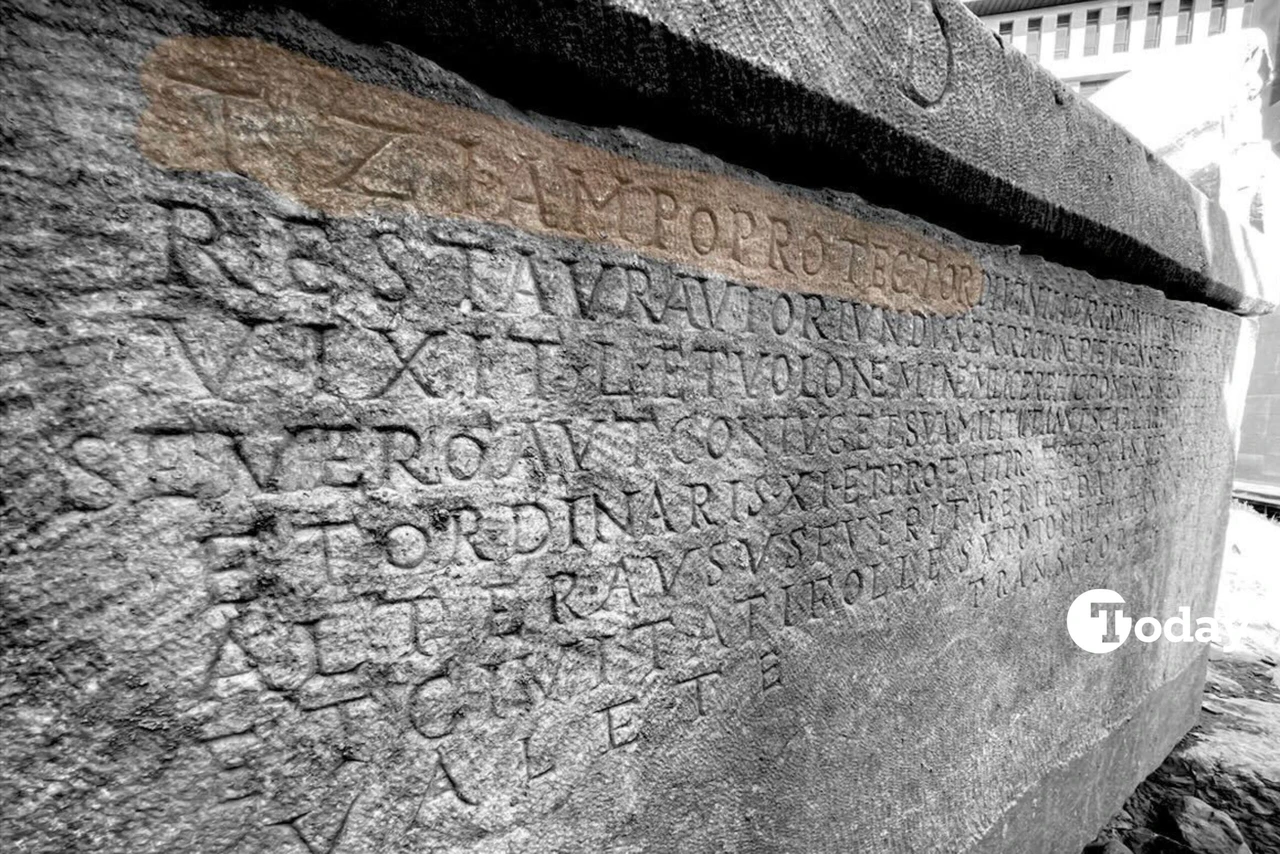Israel’s bombing campaign threatens Lebanon’s ancient Roman temples
 This picture shows the destruction at the site of an overnight Israeli airstrike in Lebanon's eastern city of Baalbek on October 11, 2024, amid the ongoing war between Hezbollah and Israel (AFP Photo)
This picture shows the destruction at the site of an overnight Israeli airstrike in Lebanon's eastern city of Baalbek on October 11, 2024, amid the ongoing war between Hezbollah and Israel (AFP Photo)
Israel’s bombing campaign has targeted Lebanon’s UNESCO World Heritage site in Baalbek, which houses three ancient Roman temples.
In response, Lebanese Culture Minister Mohammed Mortada has called for international intervention after smoke was seen rising near the ancient ruins.
Mortada urged UNESCO to demand Israel’s compliance with international laws, warning that the attacks bear no difference from the actions of terrorist groups such as Daesh.
Historic site under siege
Following the bombardment of Gaza, Israeli forces have now launched airstrikes on Lebanon, including the ancient city of Baalbek, a UNESCO World Heritage site famous for its Roman temples dedicated to Jupiter, Venus and Mercury.
Mortada confirmed that the bombs fell as close as 500 meters from the ancient ruins, though the temples remain unharmed for now. However, he stressed the ongoing threat posed by continued airstrikes and emphasized the urgency of international action.
The Lebanese Culture Minister instructed the country’s UNESCO envoy to convey the gravity of the situation to the organization. “UNESCO is responsible for these nations, and we have informed the UN and the Security Council to demand Israel respects international laws and refrains from damaging our heritage,” Mortada stated.

Smoke rises behind Roman temple Baalbek’s iconic columns
Social media footage from over the weekend showed smoke rising behind the monumental columns of Baalbek’s Temple of Jupiter. Céline Semaan, founder of the non-profit art and human rights organization Slow Factory, shared a poignant image on Instagram, commenting: “How are we allowing our heritage to burn, and how are we being erased from every corner of this so-called civilized world?”
Baalbek, a city with 11,000 years of history, was once known as the “City of the Sun” during the Hellenistic period. The massive Roman structures were built over two centuries and served as a pilgrimage site.
UNESCO describes Baalbek as one of the finest examples of Imperial Roman architecture, with its towering structures regarded as a symbol of ancient engineering prowess.
The Baalbek region, located in the Bekaa Valley of eastern Lebanon, has been targeted multiple times since Israel intensified its bombardment of Lebanon on Sept. 23.
The indiscriminate attacks on this historic city have sparked widespread outrage, with many comparing Israel’s actions to the brutal tactics of extremist groups.
Cultural destruction in Gaza
Israel’s military offensive in Lebanon is partly a continuation of its war in Gaza. Over 41,000 people, mostly women and children, have died in Gaza as a result of Israeli airstrikes in 2023. Cultural and historical sites have also been severely damaged or obliterated, including religious and archaeological landmarks.
The Great Mosque of Gaza and several museums are among the many cultural heritage sites destroyed by Israeli bombings. One of the oldest churches in the world, St. Porphyrius Church in Gaza, was hit twice by Israeli rockets. A report by the United Nations Development Programme (UNDP) estimated that 341 mosques have been destroyed.
In May, UNESCO expressed “deep concern” over the ongoing destruction in Gaza, promptly adding Saint Hilarion Monastery to its List of World Heritage in Danger.
The ancient city of Baalbek, a treasured UNESCO World Heritage site, faces serious threats amid Israel’s military actions. With international laws at risk of being violated, there are growing calls for urgent intervention to safeguard these irreplaceable cultural and historical landmarks.
This alarming situation not only endangers centuries-old structures but also echoes the broader pattern of cultural destruction across conflict zones in the region.



